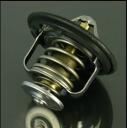April 26th, 2011 by Hal Moses
 According to research, more commuters than ever are experiencing rush hour breakdowns. These breakdowns occur between 7-9 am and are leaving employees and carpool moms stranded. Motorists should have a roadside assistance program to protect themselves in this case.
According to research, more commuters than ever are experiencing rush hour breakdowns. These breakdowns occur between 7-9 am and are leaving employees and carpool moms stranded. Motorists should have a roadside assistance program to protect themselves in this case.
Breakdowns leave drivers stranded and expose them to road dangers. In a recent survey of motorists who have had a breakdown in the last two years, 15% had children in the car, 20% were in a situation that they felt wasn’t safe to leave their car, and 5% had a passenger who was elderly. Also, 30% of the women surveyed felt stressed about finding help.
The survey also revealed that there are five main locations for vehicles to breakdown. The first location is at home. This means that drivers aren’t even getting out of their driveways. The second and third locations are on the way to work, and when going to visit family and friends. The fourth typical breakdown spot is at shops, and work comes in fifth.
To avoid dangerous breakdown situations, make sure you have a roadside assistance program and a good auto warranty. Road service will keep you from waiting a long time. Also, emergency roadside assistance will allow you to get back on the road faster.
April 23rd, 2011 by Hal Moses
 We’ve all been there. You’re driving along when all of a sudden you hear sirens blaring behind you. You realize that you are going to get a speeding ticket and you really don’t have the extra funds to pay for it. With all of the expenses you’re already paying for your vehicle, such as roadside assistance, auto warranty, maintenance, and loans, the last thing you need is the added cost of a speeding ticket. Well, never fear because the Trapster just may save you.
We’ve all been there. You’re driving along when all of a sudden you hear sirens blaring behind you. You realize that you are going to get a speeding ticket and you really don’t have the extra funds to pay for it. With all of the expenses you’re already paying for your vehicle, such as roadside assistance, auto warranty, maintenance, and loans, the last thing you need is the added cost of a speeding ticket. Well, never fear because the Trapster just may save you.
Pete Tenereillo of California invented trapster. Essentially, this is a social network where motorists can use their cell phones to alert other drivers about speed traps that they have encountered.
All you have to do is sign up for a free membership at the website and then download the Trapster software on your cell phone. Most of the latest cell phones, PDAs and Blackberries can accommodate this software.
After signing up, you’re ready to get out and start driving. If you come across a state trooper looking for speeders you hit “pound 1†on your cell phone. This alerts other motorists when they approach the same spot.
This system is ideal because it’s “hands freeâ€, which means it’s safe for drivers. Also, sophisticated cell phones can allow a map to be displayed where the speed trap is.
April 23rd, 2011 by Hal Moses
 Most people believe that SUVs are the safest vehicles on the road; however, recent test results show that midsize SUVs may not offer the best safety. In fact, the Insurance Institute for Highway Safety says that a lot of cars produced better results in crash tests than six midsize SUVs.
Most people believe that SUVs are the safest vehicles on the road; however, recent test results show that midsize SUVs may not offer the best safety. In fact, the Insurance Institute for Highway Safety says that a lot of cars produced better results in crash tests than six midsize SUVs.
The SUVs tested were the Chevrolet Trailblazer, Nissan Pathfinder, Nissan Xterra, Ford Explorer, Jeep Grand Cherokee and Toyota 4Runner. These vehicles were tested in a front collision at 40mph and a side impact.
All of these vehicles showed improvement since the last IIHS test. In the instance of the front collision, five out of the six vehicles were rated Good. The Trailblazer was rated Acceptable.
However, the results of the side-impact tests weren’t as good. The Trailblazer and Grand Cherokee didn’t protect the torso because they are only equipped with standard side airbags to protect the head. The Pathfinder, 4Runner, and Xterra had better performance with side impact because they include side airbags that protect the torso as well as the head. However, cars had better ratings on side impact.
If you’re looking to purchase a midsize SUV, purchase one with high crash ratings. For instance, the Ford TaurusX and Edge, Hyundai Santa Fe, Honda Pilot, and Subaru Tribeca are the highest rated midsize SUVs. Although these SUVs are durable, it’s necessary to purchase an auto warranty to protect yourself from repair costs down the road. After all, no vehicle is full proof.
April 20th, 2011 by Hal Moses
 Colorado has a new system that will help prevent road kill along one of the busiest highways in the state. The system works by using an underground cable running parallel to the highway that is able to sense if an animal is around through an electromagnetic field. If an animal trips the system, drivers are alerted through electronic road signs.
Colorado has a new system that will help prevent road kill along one of the busiest highways in the state. The system works by using an underground cable running parallel to the highway that is able to sense if an animal is around through an electromagnetic field. If an animal trips the system, drivers are alerted through electronic road signs.
The system is going to be tested in Colorado on US-160, and radar detectors will be deployed to observe if motorists slow down after receiving the warning. If it is obvious that the system is working it will most likely proliferate on roadways that have seen a large amount of collisions between cars and animals.
You may think this is a strange idea, or that it’s a waste of money. And, people have even asked, “Why not just put up a fence?â€Â Well, if you’ve ever seen a deer jump a fence you would understand why that wouldn’t help the problem.
About seventy percent of collisions on Colorado’s highways involve animals. With those high numbers something needs to be done about the problem. The underground cable is a good start, but drivers need to drive more defensively. In addition, all motorists should have a roadside assistance program in case of an emergency so they don’t end up stranded. Also, protect yourself with an auto warranty.
April 15th, 2011 by Hal Moses
 If you ask a woman if she would like to buy a Dodge Viper, chances are she will say “noâ€. This car is a V-10 two seater that starts at approximately $80,000. Although this may not be a woman’s cup of tea, studies show that many men would like to have this car. Like many other aspects of life, men and women seem to have very different tastes, and cars are no exception.
If you ask a woman if she would like to buy a Dodge Viper, chances are she will say “noâ€. This car is a V-10 two seater that starts at approximately $80,000. Although this may not be a woman’s cup of tea, studies show that many men would like to have this car. Like many other aspects of life, men and women seem to have very different tastes, and cars are no exception.
Men and women buy the Viper, but 91% of customers are men. The Porsche 911 and BMW M5 are also cars being bought primarily by males. These models cost above $60,000. Studies show that men often equate their car with their image. In other words, they choose cars that will portray a certain status.
What cars do women like? The #1 choice is the Toyota RAV4. Women like to purchase small, affordable cars that are easy to buy. For example, the Saturn SC, SL, and ION are popular choices for women. These cars start at around $10,000 including new car warranties, and have a reputation of being “no hassle†when it comes to buying.
It is obvious that women and men think very differently in lots of areas, cars included. Men like to buy the fast, impressive cars, whereas women purchase the inexpensive, small cars. The only common ground that these cars have is that they are backed by an auto warranty.
April 14th, 2011 by Hal Moses
 A recent survey by Consumer Reports Nat’l Research Center shows that drivers in America are feeling the pain of high gas prices and it’s having an affect on their lifestyles and car purchasing decisions. In fact, people are opting to hold onto their current vehicles and purchase used car warranties.
A recent survey by Consumer Reports Nat’l Research Center shows that drivers in America are feeling the pain of high gas prices and it’s having an affect on their lifestyles and car purchasing decisions. In fact, people are opting to hold onto their current vehicles and purchase used car warranties.
Consumers say that they aren’t doing as much vacationing, driving, and entertainment spending. Also evident, is that people are struggling with the cost of health care and food prices. Who should be blamed for these hard times? The survey revealed that 77% of people blame the federal government for not being able to carry out an energy policy that is effective, and 75% blame oil companies, as well as foreign producers of oil.
The price of gas has risen dramatically this year. That quick change has caused the price of transportation, heating oil and food to go up also. Consumers are feeling the financial burden on many fronts with no sign of relief. The result of this is that 45% of people aren’t putting as much money into their savings accounts, approximately one quarter aren’t spending as much on healthcare or food, and 17% are charging more on credit cards.
The rising fuel costs are having a poor effect on consumers’ lifestyles. People are holding onto their current cars and purchasing an auto warranty instead of buying new vehicles. Essentially, people are just trying to weather the storm.
April 13th, 2011 by Hal Moses
 An accelerating driver trend from SUVs and pickup trucks to small fuel-efficient cars will help reduce rollovers, but experts on safety are worried that a smaller fleet presents serious health risks, despite anti-collision systems, air bags, and other safety advances.
An accelerating driver trend from SUVs and pickup trucks to small fuel-efficient cars will help reduce rollovers, but experts on safety are worried that a smaller fleet presents serious health risks, despite anti-collision systems, air bags, and other safety advances.
According to the Insurance Institute for Highway Safety, which measures the performance of cars in crash tests, shifting to small cars is going to make problems worse. They claim that people are better off in a vehicle that is bigger, not smaller.
U.S. carmakers have been distressed and are therefore retooling plants in Latin America, Europe, and around the world to get more compact cars to Americans in upcoming years and try to meet federal standards on fuel economy that are tougher.
At least 40,000 motorists are killed on roads in America annually in traffic accidents. Approximately three-quarters of these people are from passenger vehicles and two-thirds of them from cars.
Consumers are concerned with saving auto costs, such as car prices, auto warranty prices, and gas costs, yet safety needs to be their #1 concern.
April 12th, 2011 by Hal Moses
 The thermostat in your car serves the purpose of regulating the temperature so it stays at a desired level. To achieve this, it controls the cooling and heating mechanisms that control the heat flow throughout the system. The thermostat manages the amount of coolant in the internal combustion engine. A thermostat is necessary in all liquid cooled engines.
The thermostat in your car serves the purpose of regulating the temperature so it stays at a desired level. To achieve this, it controls the cooling and heating mechanisms that control the heat flow throughout the system. The thermostat manages the amount of coolant in the internal combustion engine. A thermostat is necessary in all liquid cooled engines.
If your thermostat isn’t working correctly it may be due to several reasons. First, the thermostat may be affected if the water pump is failing. The thermostat may also be affected with an overheated engine or if coolant is leaking.
Make sure you have a mechanic look at your thermostat on a regular basis. It plays a key position in keeping your engine cool, so it needs to be replaced every few years.
Also, if you don’t replace your thermostat when it’s time, you may find yourself with additional problems, such as emission problems, knocking with acceleration, and poor fuel-economy, and chances are you will find yourself calling your road service program. It is also a good idea to have an auto warranty for peace of mind.
April 9th, 2011 by Hal Moses
 Way back when the Jetsons captured the imaginations of millions on TV, people have had dreams of using flying cars for their daily transportation. However, there hasn’t ever been anything in real life that could even come close to flying cars-until now. In Massachusetts, Terrafugia built the Transition, which took off during the official launch of the company’s $194,000 “roadable aircraft.â€
Way back when the Jetsons captured the imaginations of millions on TV, people have had dreams of using flying cars for their daily transportation. However, there hasn’t ever been anything in real life that could even come close to flying cars-until now. In Massachusetts, Terrafugia built the Transition, which took off during the official launch of the company’s $194,000 “roadable aircraft.â€
Basically, that means that this vehicle is a small aircraft that has the capability to travel on public roadways at “highway speedsâ€, and it gets approximately 30 mpg on regular unleaded gas. The range on this vehicle in the air is 460 miles. However, it has a useful load of only 430 pounds, which means that passengers can’t be too overweight, and they can’t pack too heavy.
If you’re interested in this vehicle, you will need a pilot’s license and $194,000. And at that price you might want a good auto warranty. While this is an exciting idea, dropping off Judy, Elroy and Jane before going to work in your flying car is still a ways off.
April 8th, 2011 by Hal Moses
 With fuel prices on the rise there is an abundance of fuel-saving tips. People advise not to carry extra weight in your trunk, drive gently and combine your errands. However, the one tip that will allow you to save the most is to slow down.
With fuel prices on the rise there is an abundance of fuel-saving tips. People advise not to carry extra weight in your trunk, drive gently and combine your errands. However, the one tip that will allow you to save the most is to slow down.
In the average sedan, every 10 mph over 60 is equivalent to gas prices rising 54 cents per gallon. When you are traveling on the highway, your vehicle is in the highest gear with relatively low rpm’s. In order for your vehicle to maintain speed it has to overcome the friction of the tires on the roadway, it’s moving parts, and especially the flow of air around it.
At high speeds, it takes up 40% of a vehicle’s energy to push around air. It makes the task even more difficult the faster you go. There is much more wind resistance at 70-80mph than 50-60mph.
If a vehicle at 65mph gets approximately 28 mpg, driving 75mph would only get you 24mpg. If you drive slower, at 55mph, you could save even more. In fact, the 55mph speed limit was set in 1974 as a response to the energy crisis of the time.
With the tough economy, consumers need all the help they can get. Saving on fuel is a big help, and all they have to do is slow down. After shelling out money for maintenance, an auto warranty, and financing, motorists don’t want to have to waste money on gas.
 According to research, more commuters than ever are experiencing rush hour breakdowns. These breakdowns occur between 7-9 am and are leaving employees and carpool moms stranded. Motorists should have a roadside assistance program to protect themselves in this case.
According to research, more commuters than ever are experiencing rush hour breakdowns. These breakdowns occur between 7-9 am and are leaving employees and carpool moms stranded. Motorists should have a roadside assistance program to protect themselves in this case.











